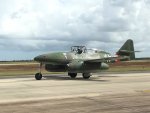Just to add to the above........
In the German mercenary armies of the Landsknechts, these troops were called the Verlorene Haufen, which has the same meaning as the Dutch term, the word Haufen itself being a general term for a loosely organised group of men. These men carried long double-handed swords, with which they had to hew their way through the massive pike formations opposing them. They also had to withstand the first wave of attacks when defending a breastwork. Members of the Verlorene Haufen earned double pay, thus giving them the name of Doppelsöldner ('Double-wagers'), but since there were not enough volunteers, criminals that had been sentenced to death were taken into the ranks as well. As a field sign, the Verlorene Haufen carried a red Blutfahne ('Blood Banner').
By extension, the term forlorn hope became used for any body of troops placed in a hazardous position, e.g., an exposed outpost, or the defenders of an outwork in advance of the main defensive position.[1] This usage was especially common in accounts of the English Civil War, as well as in the British Army in the Peninsular War of 1808–1814, and in the days of muzzle-loading muskets, the term was most frequently used to refer to the first wave of soldiers attacking a breach in defences during a siege.
While it was likely that most members of the forlorn hope would be killed or wounded the intention was that some would survive long enough to seize a foothold that could be reinforced, or at least that a second wave with better prospects could be sent in while the defenders were reloading or engaged in mopping up the remnants of the first wave.[1] That said such soldiers were rarely suicidal or foolhardy: British troops of the forlorn hope at the 1812 Siege of Badajoz carried a large bag (5–6 feet (1.5–1.8 m) by 2 feet (0.61 m) in diameter) stuffed with hay or straw, which was thrown down into the enemy trenches to create a cushion and prevent injury as they jumped down.[10]
A forlorn hope may have been composed of volunteers and conscripted criminals and were frequently led by ambitious junior officers with hopes of personal advancement: if the volunteers survived, and performed courageously, they would be expected to benefit in the form of promotions, cash gifts and adding glory to their name (a military tradition at least as old as the Roman Republic[11]) while the commanding officer himself was virtually guaranteed both a promotion and a long-term boost to his career prospects.[12]
In consequence, despite the grave risks involved for all concerned, there was often serious competition for the opportunity to lead such an assault and to display conspicuous valor.
The French equivalent of the forlorn hope, called Les Enfants Perdus ('The Lost Children'), were all guaranteed promotion to officer rank should they survive, with the effect that both enlisted men and officers joined the dangerous mission as an opportunity to raise themselves in the army.





